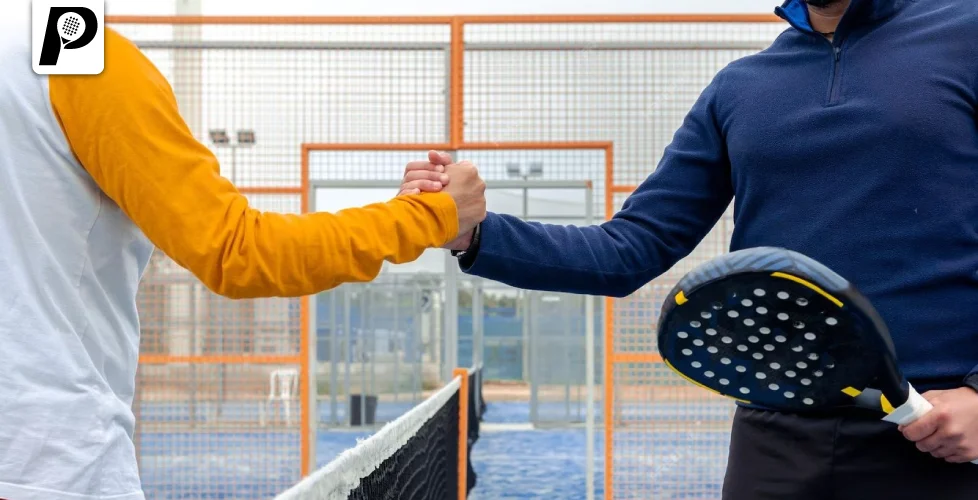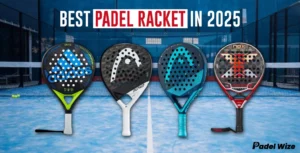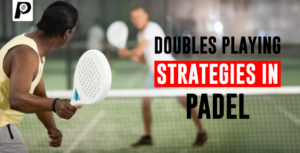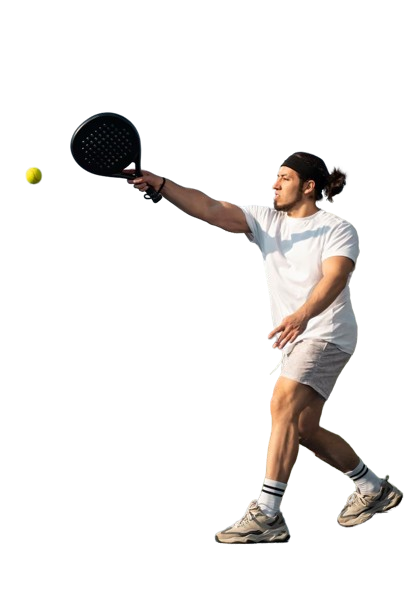Padel, a sport that combines elements of tennis and squash, is rapidly gaining popularity worldwide. Whether you’re a beginner or aiming to refine your skills, understanding the rules and regulations is crucial to playing like a pro. This blog will guide you through the essential padel rules, helping you master the game.
Related blog The Fusion of Tennis and Squash: A Game-Changer Taking the World by Storm
Introduction to Padel
Players typically play padel in doubles on an enclosed court about one-third the size of a tennis court. The rules are similar to tennis, with some key differences that make the game unique and exciting.
The Court and Equipment
Understanding the layout of the padel court and the specific equipment used is crucial for any player. The court, smaller and enclosed compared to a tennis court, and the distinctive solid paddle both contribute to the unique dynamics of the game. Here’s a closer look at the essential elements of the court and the gear needed to play padel effectively.
- Court Dimensions: The padel court measures 10 meters wide by 20 meters long, enclosed with walls made of glass and mesh.
- Net: The net is 10 meters long and 0.88 meters high in the center, rising to 0.92 meters at the ends.
- Paddle: Unlike tennis, padel uses solid paddles without strings, and the ball used is similar to a tennis ball but with slightly less pressure.
Related blog How to Care for Your Padel Balls for Longevity
Basic Rules of Play
Understanding the basic rules of padel is essential for any player, whether you’re just starting or looking to refine your skills. These foundational rules govern the gameplay, ensuring fair play and adding to the sport’s unique and exciting dynamics.
- Scoring: Padel scoring follows the same format as tennis: points (15, 30, 40, game), games, and sets. A match is typically best of three sets.
- Serve: The serve must be underhand, with the ball hit below waist height. The server must stand behind the service line and bounce the ball before hitting it. The serve must land in the diagonally opposite service box.
- Returning the Serve: The player must let the ball bounce once before returning it. They can then play it off the walls, adding a unique strategic element to the game.
- In-Play Rules: The ball can bounce once on the ground and can hit the walls after bouncing. Players can use the walls to return the ball, creating dynamic and tactical rallies.
- Faults: A serve is considered a fault if the ball hits the net, fails to land in the correct service box, or hits the walls before bouncing. Double faults result in the loss of the point.
Related blog How to Improve Your Game with the Right Padel Racquet
Advanced Rules for Competitive Play
For those looking to elevate their padel game, understanding advanced rules is crucial. These rules add depth to the sport, requiring strategic thinking and precise execution, essential for competitive play. Whether it’s mastering the nuances of serves or leveraging the walls for tactical advantage, knowing these rules will help you play like a pro.
- Let: If the ball hits the net and lands in the correct service box, it is called a let, and the serve is retaken.
- Volleys: Players can volley the ball (hit it before it bounces) except when returning a serve.
- Out of Bounds: If the ball hits the ground outside the court or hits the fence directly without bouncing, it is considered out.
- Net Play: Players can approach the net for volleys and smashes, making positioning and teamwork crucial.
Related blog How to Improve Your Game at a Padel Club
Common Mistakes to Avoid
In padel, even seasoned players can fall into certain pitfalls that hinder their performance. By identifying and correcting these common mistakes, you can significantly improve your game and maintain a competitive edge on the court.
- Improper Serving: Ensure your serve is underhand and the ball is hit below waist height.
- Foot Faults: Keep both feet behind the service line until the ball is struck.
- Double Bounces: Only one bounce is allowed before returning the ball.
- Using Walls Incorrectly: Understand the strategic use of walls to return difficult shots.
Tips to Play Like a Pro
Playing padel like a pro requires more than just understanding the rules; it demands strategic thinking, excellent communication with your partner, and consistent practice. Here are some expert tips to elevate your game, enhance your skills, and dominate the court.
- Positioning: Stay close to the net to dominate volleys but be ready to move back quickly.
- Communication: Work closely with your partner to cover the court effectively.
- Footwork: Keep your movements light and quick, allowing you to react swiftly to shots.
- Practice: Regular practice is essential to refine your skills and understand the nuances of the game.
Related blog What is Padel? Exploring the Equipment, Rules, and Strategies
Conclusion
Mastering padel rules and regulations is the first step to playing like a pro. By understanding the court dimensions, equipment, basic and advanced rules, and common mistakes, you can elevate your game. Remember, practice and teamwork are key to success in padel. Enjoy the game and keep improving your skills!







